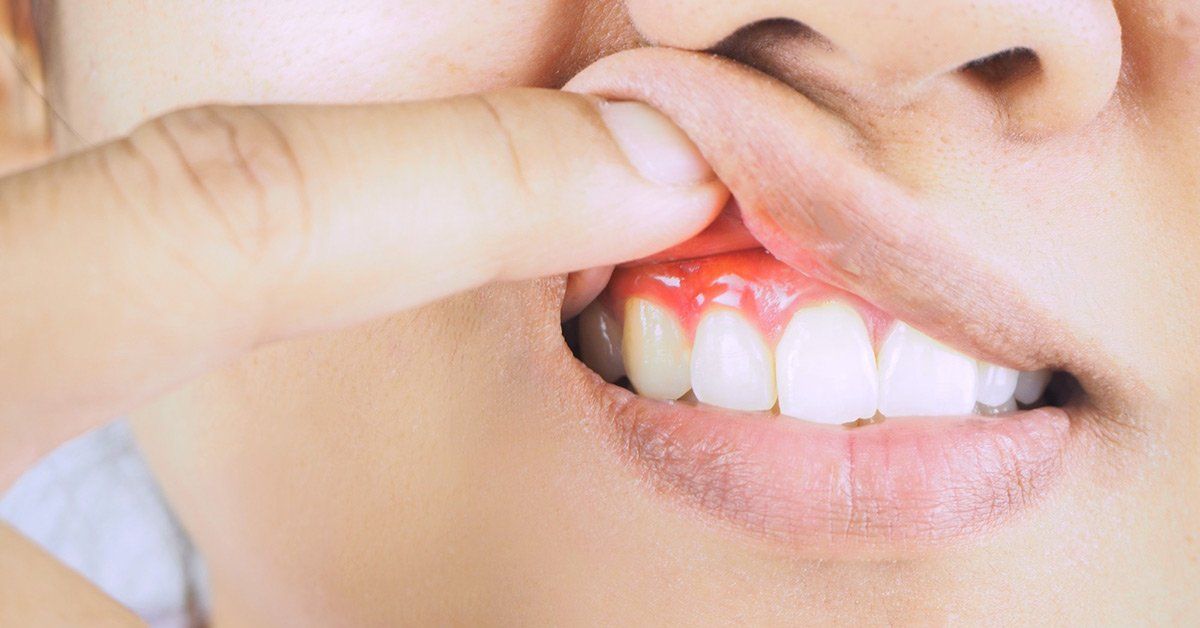The Different Stages of Gingivitis and Gum Disease Explained
Gingivitis is the first stage of gum disease. Here are the different stages of gingivitis and gum disease you should know about.
How do you know if you have periodontal disease?
It's tricky because it may not look like you have gum disease or periodontal disease until it's in the advanced stage. There are certain symptoms
though you could watch out for. These include red, inflamed or tender gums, bleeding while brushing or flossing, receding gums, bad breath, and so on.
The good news is that gum disease in its earliest stage is reversible. That being said, let's talk about the stages of gingivitis, who can be affected by periodontal disease, causes, and everything else you should know about gum disease.
First Things First: Why You Should Take Periodontal Disease Seriously
Yes, even if you know how to reverse gingivitis fast, you need to understand why it's so important to take good care of your teeth and gums. Poor oral health doesn't just result in bad breath or a toothache. It can cause tooth loss, and you could be compromising your overall health.
Don't forget that research has linked oral health problems, in particular periodontal disease, to many health conditions. These include Alzheimer's, heart disease, diabetes, osteoporosis, etc.
So if you're trying to be more healthy and follow a healthier lifestyle, you shouldn't neglect your oral health.
Who Is at Risk for Gum Disease?
According to the CDC, more than 45% of adults aged 30 years and older have some form of gum disease. If you already have periodontal disease, your risk will increase as you age.
Other factors that make you more at risk for gum disease include:
- pregnancy and other hormonal conditions (e.g. menopause)
- illnesses such as cancer or HIV
- medications that lessen the natural flow of saliva
- smoking
- a family history of dental disease.
Of course, if you don't practice good oral hygiene habits like brushing and flossing regularly or visiting your dentist at least twice a year, you make it easier for gingivitis to develop.
Understanding Periodontal Disease: What Is It Exactly?
Is it gingivitis, periodontitis, advanced periodontal disease? Some people are confused by these terms, but what you should know is that it all starts with a gum infection.
When left unchecked, it will progress until the bacteria spreads to the jawbone, resulting in tooth loss. Now, the operative term here is 'progress' because you have a good chance of reversing gingivitis, aka the earliest stage, if you actively take charge of your oral health.
This could mean using a periodontal toothpaste, flossing at least once a day, and following your dentist's advice.
What Causes Gum Disease?
The primary cause of gum disease is bacteria. You see, there's a space called a sulcus where your teeth and gums attach. This is a prime spot for food and plaque to get trapped in, which then causes gum infection or gingivitis.
Here's where it gets interesting. On the surface of your teeth, there's a thin film of bacteria known as plaque. It's a constant enemy that you have to fight with brushing and flossing.
When this plaque hardens, it can extend below the gum line, which can lead to an infection. Eventually, if you don't do anything about this plaque, the infection will get worse, causing injury to the surrounding tissue and bones supporting the teeth.
The 4 Stages of Gingivitis or Gum Disease
Overall, there are four periodontal disease stages. These are gingivitis, slight periodontal disease, moderate periodontal disease, and advanced periodontal disease.
Let's talk about each stage in detail.
Gingivitis
Of the gum disease stages, this is the only one that's reversible. This means plaque has built up around your teeth, but it hasn't affected the surrounding tissues or the bones.
For a lot of patients, this stage doesn't show a lot of symptoms. You may have bad breath on occasion, some swelling and redness in your gums, or your teeth may bleed when brushing or flossing. If you notice any of these symptoms, you can ramp up your oral hygiene habits and make sure to follow the recommendations of your dentist.
Slight Periodontal Disease
The second stage of gum disease isn't reversible, but it doesn't mean it's a lost cause. You just have to be more aggressive with your gum disease fighting strategy. Remember, stage two indicates that the infection has spread and some bones have been compromised.
Keep in mind that when bacteria starts attacking the tissues and bones in your mouth the process creates "pockets" around the teeth. Now, as these pockets become deeper, they provide a larger space for bacteria to multiply. During this stage, the pockets are about 4 to 5 millimeters.
To prevent further bone loss, you have to use periodontal toothpaste, perfect your flossing technique, and see a dentist right away if you haven't done so already.
Moderate Periodontal Disease
Like other gum disease stages, moderate periodontal disease is irreversible. Here, the pockets are around 6 to 7 mm. Aside from destroying your bones, bacteria will also start getting into your bloodstream.
At this stage, your dentist will implement deep cleaning procedures including scaling and root planing. Otherwise, your gum disease will progress to the last stage, which is...
Advanced Periodontal Disease
The last and most serious out of all periodontal disease stages, advanced gum disease is where you have up to 90% of bone loss. During this stage, all the symptoms mentioned earlier are at their worst—bad breath becomes severe halitosis, inflamed gums now oozes pus, and so on.
Pockets are of course deeper, requiring either surgery or laser therapy. Without treatment, this can lead to complications including gum recession and other systemic health issues.
Want to Know More About Gum Disease or Gingivitis Stages?
Now that you know more about the stages of gingivitis, it's important you take it seriously if you suspect you have it.
If you're looking for a periodontist in the Upper West Side, NY, we would love to help you. For more information, feel free to contact us , or you may also browse the site to know more about us and the services we offer.
You can also check out our other posts to learn more about other dental health topics.




